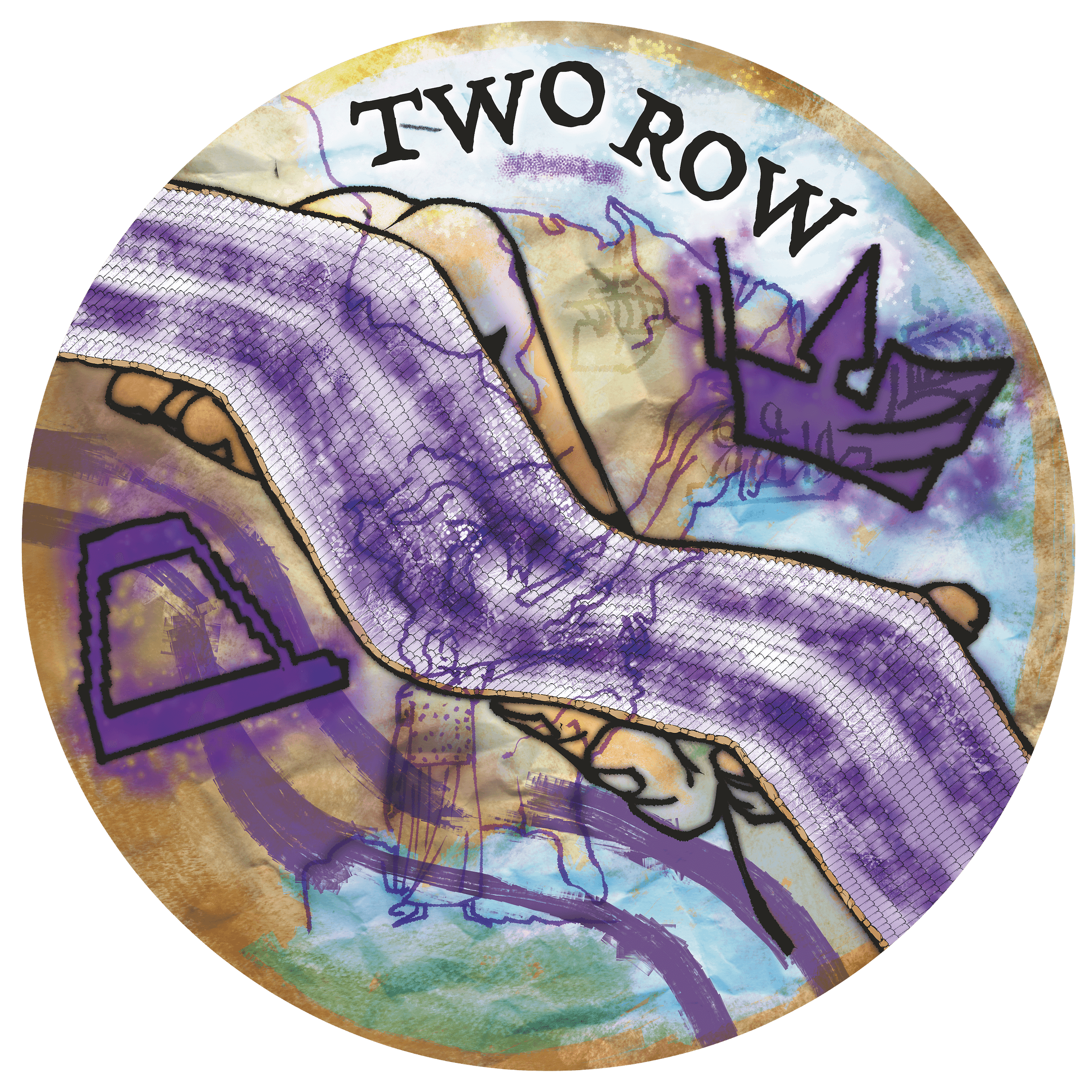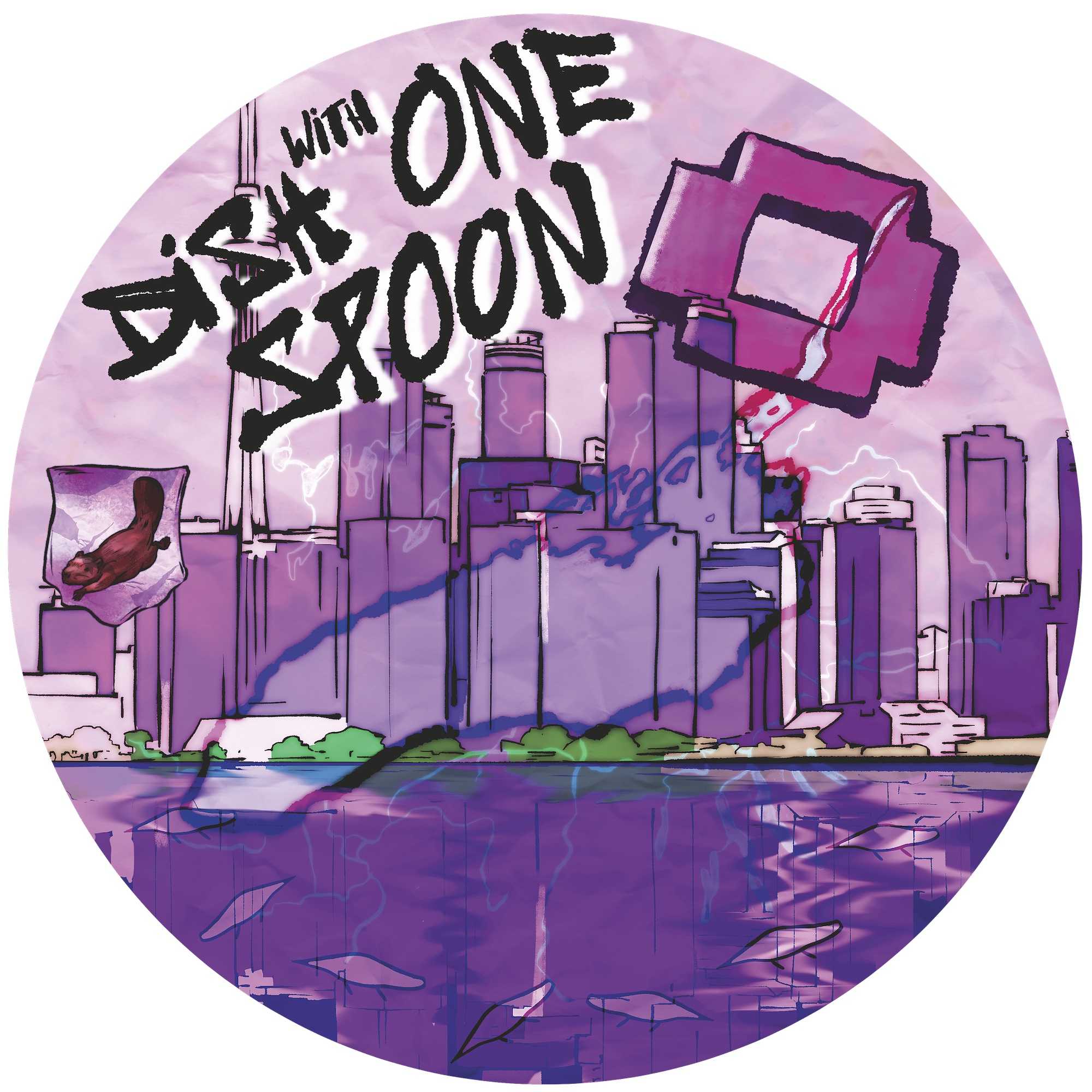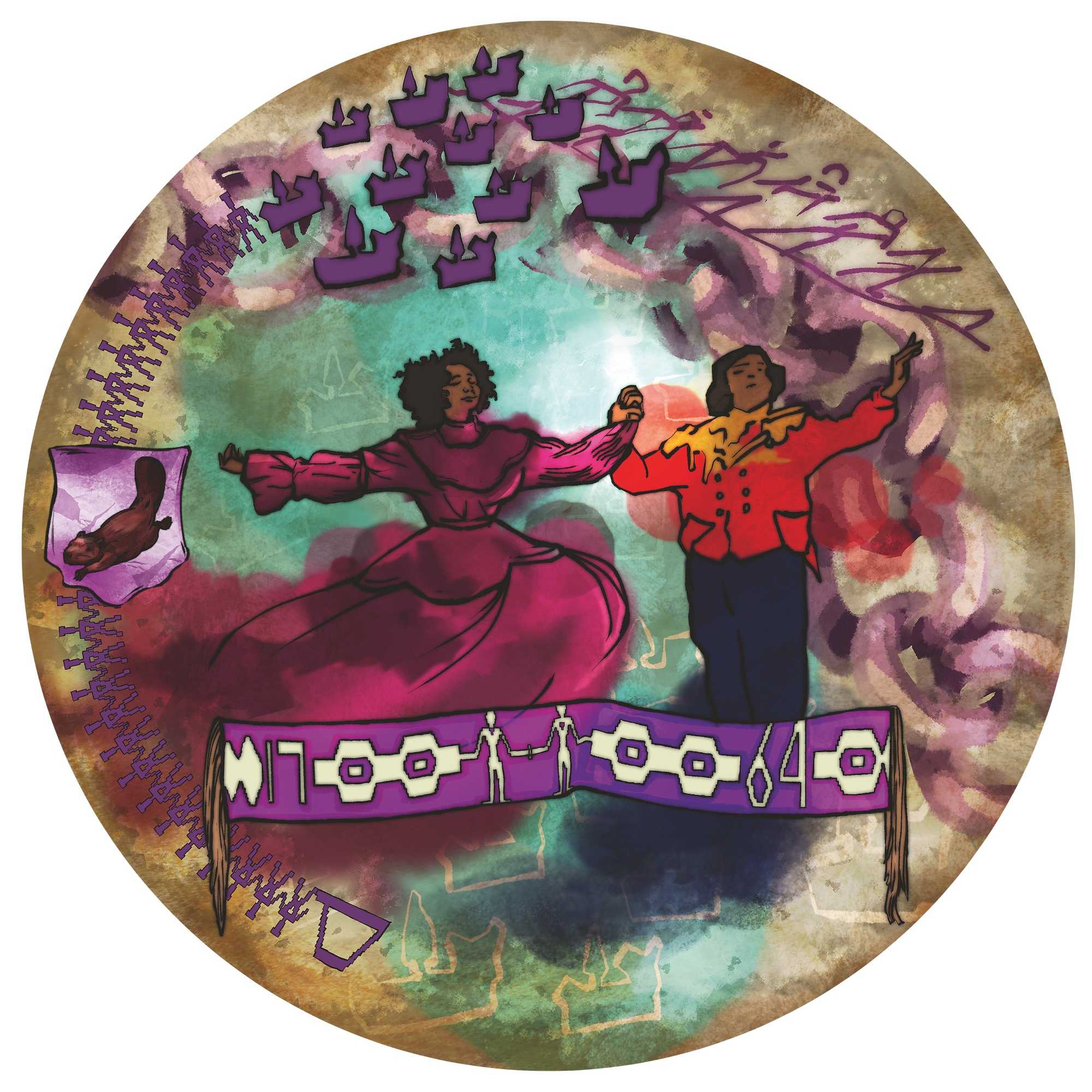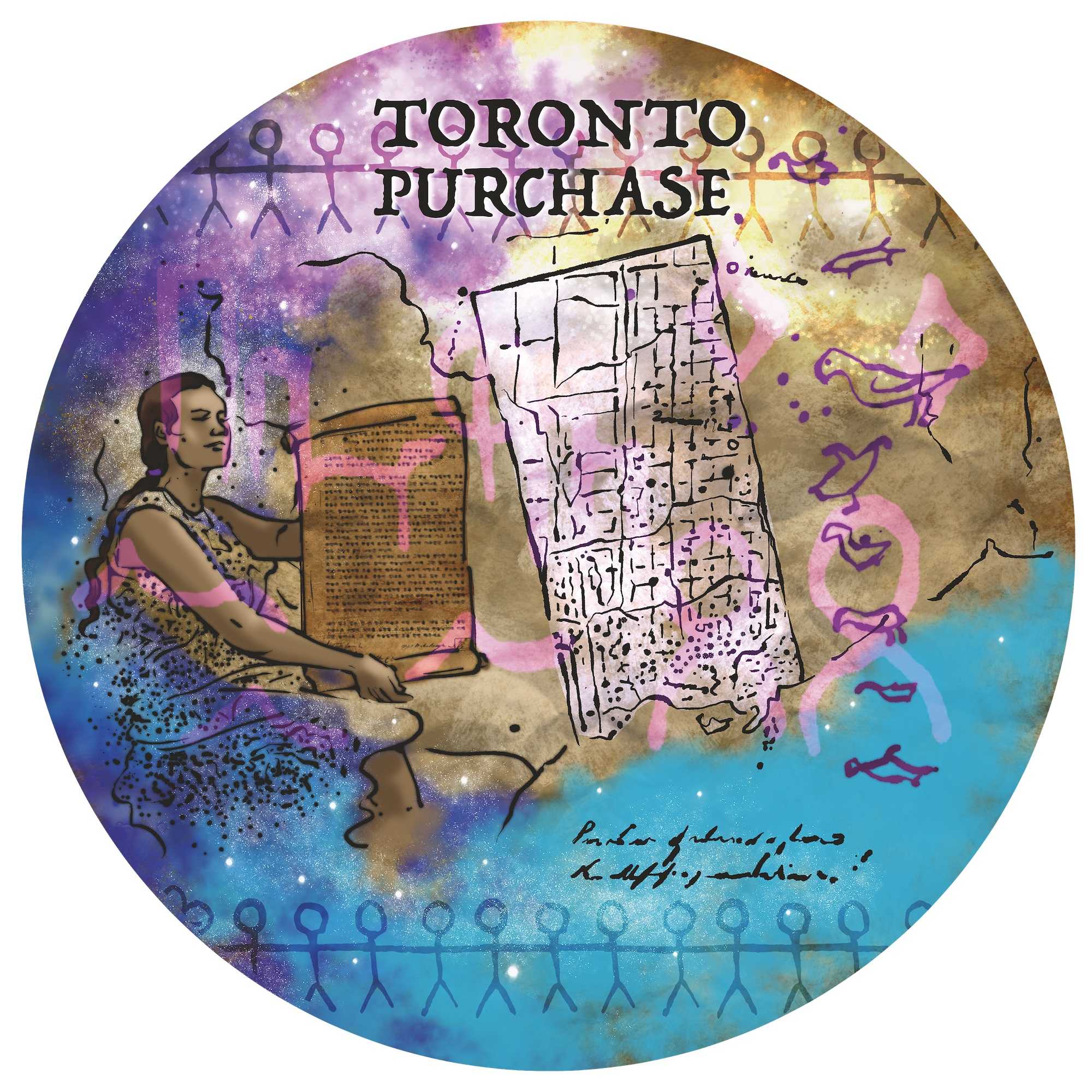Treaties for Torontonians
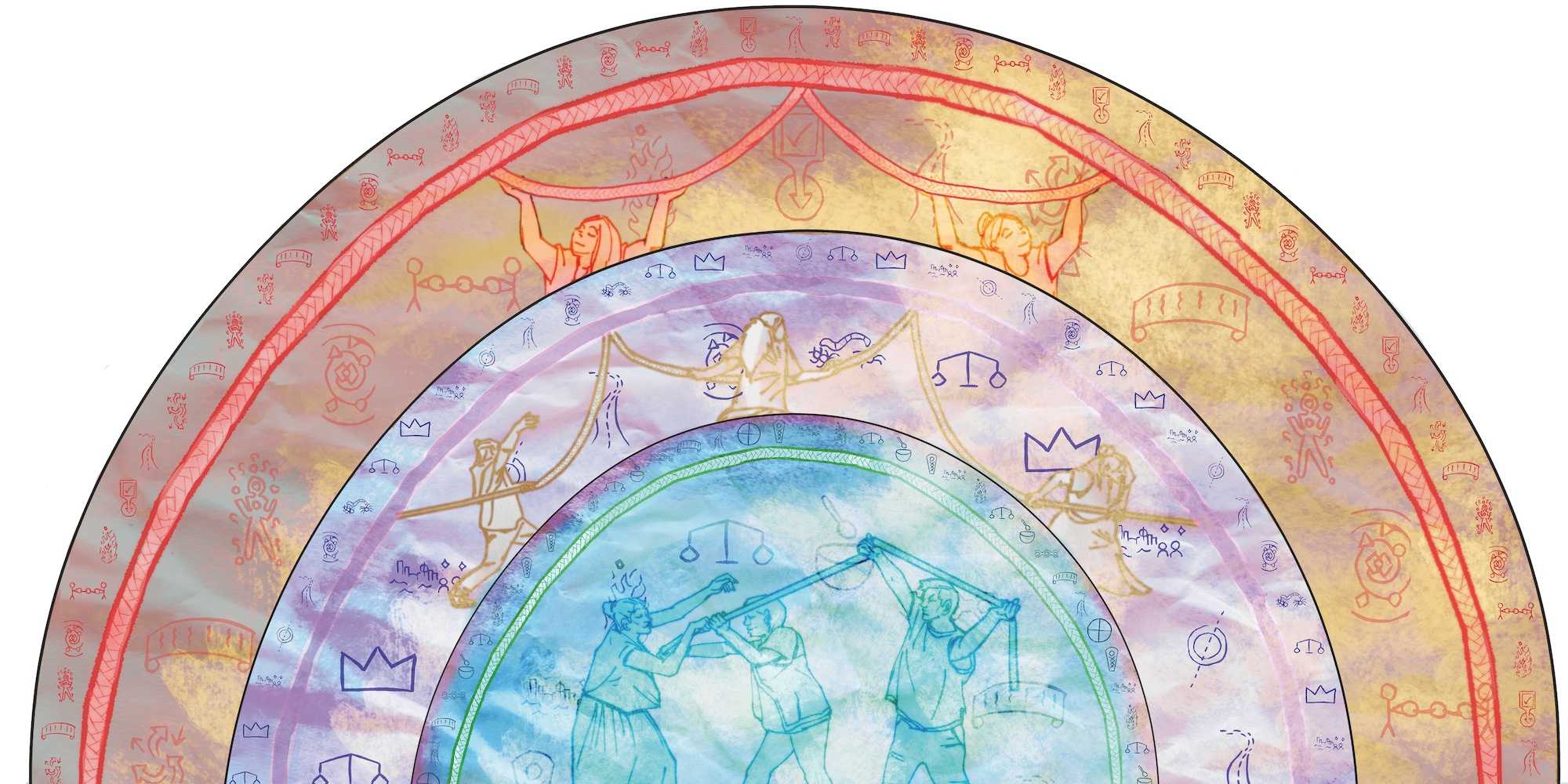
A web of interconnected and sometimes conflicting historical treaties has been negotiated on these Lands: Nation to nation agreements, anchored in the laws of these Lands; agreements that allowed for colonial settlement here; and agreements that Indigenous hosts continue to hold up as frameworks to structure our relations with each other and with the Land. Here, we explore some of the treaties and Wampum most relevant to Toronto and surrounding regions.
The Kaswentha, or Two Row Wampum, documents a separate-but-equal relationship based on peaceful co-existence and non-interference negotiated in the early 1600s between the Mohawk and the Dutch. When the British replaced the Dutch as the colonial presence in Haudenosaunee territories in 1667, they took up the treaty responsibilities associated with the Kaswentha. Over the next decades their alliance evolved and strengthened into what became known as the Haudenosaunee-British Covenant Chain, which Haudenosaunee people assert is the basis of their relationship with Crown to this day. British colonial territorial claims expanded into the Great Lakes region after their defeat of the French in 1763 (a victory won thanks to the military support of Haudenosaunee and many Anishinaabek nations). At the 1764 Treaty of Niagara, the British extended the Covenant Chain to the Indigenous nations surrounding the Great Lakes, including the Anishinaabek and their powerful network of alliances known as the Western Confederacy. British promises made at Niagara were to form the basis for all subsequent treaties in the region – including the so-called Toronto Purchase of 1787 with the Mississaugas of the Credit and the forceful 1805 attempt by the British to confirm and ‘legitimize’ this “Purchase.”
Of course, treaty-making is an Indigenous diplomatic practice that long predates European arrival on these shores. An agreement grounded in Indigenous legal traditions, the Dish with One Spoon is one of several Wampum that guide relationships between the Anishinaabek and Haudenosaunee Confederacy. Today it is held up by Indigenous Peoples in Toronto as a peace agreement between the Anishinaabek and Haudensaunee. It is also widely cited (and admired) for the reciprocal responsibilities with all of creation that it foregrounds, a reading that draws on the land as a dish to be shared and cared for to ensure ongoing sustenance and life - a metaphor that is part of many Indigenous knowledge systems.
What does it mean to be a treaty person in Toronto? How can we – as Indigenous and non-Indigenous peoples – honour our treaty responsibilities? We can’t tell you what to do, but here we offer historical context and a series of activities to artfully consider the treachery, heartbreak, absurdity, and promise in our treaty history and relationships.
An expanded discussion can be found in our book, A Treaty Guide for Torontonians, where we also explore the Great Peace of Montreal and other alliances and treaties the Anishinaabek, Wendat and other Indigenous nations of the region negotiated with the French, as well as other important regional agreements, such as the Nanfan Treaty, and the Williams Treaties.

